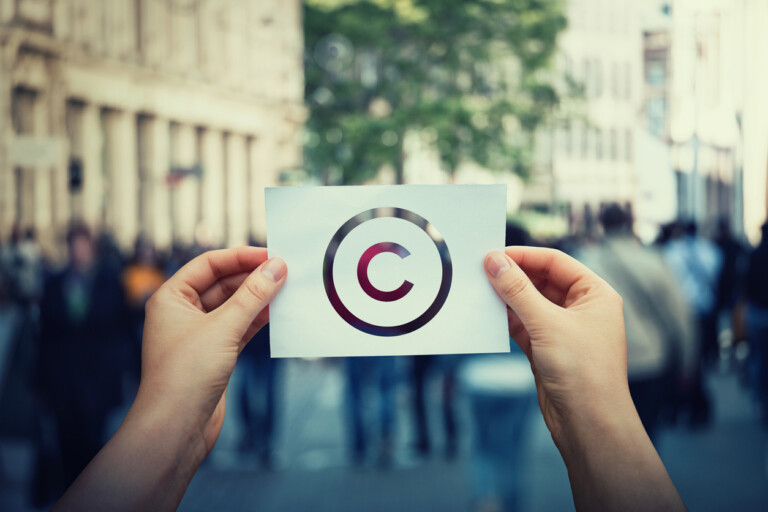The Canadian Patent Act requires good faith in prosecuting patent applications, mandating that:
73. (1) An application for a patent in Canada shall be deemed to be abandoned if the applicant does not
(a) reply in good faith to any requisition made by an examiner in connection with an examination, within six months after the requisition is made or within any shorter period established by the Commissioner;
However, guidance from the courts and the Canadian Patent Office has been scarce as to what is considered good and bad faith.
Lundbeck V. Ratiopharm (2009 FC 1102)
In Lundbeck Canada Inc. et. al. v. Ratiopharm Inc. et. al. (2009 FC 1102), the Trial Division of the Federal Court of Canada had an opportunity to consider this question and to provide both some clarifying and some challenging guidance.
Facts
To satisfy an initial Examiner’s Requisition for evidence, a patent applicant (Lundbeck) disclosed the pertinent evidence of which it had knowledge. In particular, the applicant identified an academic paper that predated its patent application (the “Wenk paper”); however, it did not provide a copy of that paper to the examiner. The Court would subsequently conclude that the Wenk paper was the most relevant evidence for evaluating the inventiveness and hence patentability of the applicant’s invention.
The presiding patent examiner reviewed the available evidence and reached a preliminary conclusion that the applicant’s invention was obvious in light of the evidence and therefore unpatentable. The examiner rendered this opinion in a second Examiner’s Requisition and gave the applicant an opportunity to respond.
The applicant responded, through its patent counsel, by arguing that a number of pieces of the evidence actually taught away from the applicant’s invention, such that the invention was not in fact obvious at all. In making this argument, counsel omitted any discussion of the Wenk paper.
Upon considering the applicant’s response, the examiner decided that the reasons for rejection had been overcome and so allowed the issuance of a patent.
It was the nature of the applicant’s response that was called into question before the Court.
Judgement
The Court reached two conclusions that have been widely noted.
First, the Court confirmed that section 73 of the Patent Act does in fact place a duty of good faith on patent applicants and their counsel. That is of course a plain reading of the section; however, a fuzzy notion had developed in some quarters of the patent bar that there was no actionable mandate of good faith. There might be a general understanding –– a gentlemen’s understanding of fair play –– but it was so amorphous and untested that it wasn’t generally enforceable, except perhaps in the most outrageous of cases. The Court’s conclusion provided welcome clarity and reinforcement.
Second, and more challenging, the Court instructed that the applicant’s response did not meet the necessary standard of good faith, because it did not directly confront the most relevant art, the Wenk paper. The Court stated, at par. 352, “A proper understanding of the prior art is clearly critical to patent examination. The duty of good faith imposed by paragraph 73(1)(a) of the post-1996 Patent Act requires that this prior art be fully and fairly described by applicants and their agents when answering requisitions from the Patent Office.” To be clear, the Court found fault with the argument, not because it was unpersuasive but because it was made in bad faith.
Consideration
This second conclusion raises concerns because it challenges the distinction between evidence and argument. Withholding and tampering with evidence are incontrovertibly bad faith acts. In contrast, an advocate is usually afforded wide freedom to submit arguments, sometimes zealously, that advance his client’s cause
The Court noted, but did not pass judgment, that the applicant’s reply to the initial Examiner’s Requisition for evidence merely identified the Wenk paper and did not submit a copy of the paper or, still further, explain its significance. It would be interesting to know whether the Court would have allowed more leeway in the applicant’s subsequent argument if the applicant had presented the initial evidence more completely.
Wide freedom of argument is certainly afforded to counsel in contested court proceedings, where each party has an advocate to advance and defend his position. A case may be lost because an argument fails to persuade, but it is unheard of for a case to be lost solely for the fact that a particular argument was advanced. If an advocate has a habit of overzealous argument, the problem tends to be self-correcting because his reputation becomes known by the court and his arguments are held in less esteem.
Admittedly, this freedom of argument is constrained in ex parte proceedings where some parties and their counsel are not present before the court and the counsel that is present is expected to avoid taking unfair advantage of the court or the absent parties. In ex parte proceedings, present counsel is obliged to fairly present both sides of a dispute.
There may be an aspect of ex parte practice to patent prosecution between an applicant and a patent examiner, with only very limited opportunity for submissions from other interested parties; however, in patent prosecution the presiding examiner is generally seen as energetically representing the people and the free marketplace and not as being a neutral like a judge. Furthermore, a patent office is a specialist administrative tribunal and a presiding patent examiner and his supervisors are expected to have specialist knowledge of the technical domain over which they preside.
Concerns
Much fuller guidance is still needed so that applicants can better understand their obligations. For example, if an examiner issues an easily rebuttable rejection but fails to issue a more pertinent and challenging rejection, would the applicant be replying in bad faith if it merely rebutted the rejection actually raised and didn’t raise and rebut a more pertinent one in plain sight? How much of the examiner’s job must the applicant take on? Must the applicant argue against its own interest or against itself? If patent prosecution is akin to ex parte court proceedings, then perhaps the answer is yes in some circumstances
A more subtle trap may result from the fact that rejections issued by the Canadian Patent Office tend to be more briefly and broadly stated than rejections issued by other patent offices, for example the United States Patent Office. This approach can be very effective and is consistent with the Canadian regulatory preference for setting objectives rather than detailed, all-encompassing rules. However, this approach also leaves more room for interpreting what a rejection means and therefore what forms of response sufficiently address the rejection.
With any allegation of bad faith, another question is how to measure and prove intent. In the often hectic, time-pressed, resource-constrained workday of technologists and their patent agents, it can sometimes be challenging to fully appreciate an invention, the related art and an examiner’s rejection. Therefore it is not unreasonable to expect that some responses may not fully address the rejection. Without direct evidence of bad faith (for example an email planning a bad faith response), can there be a finding of constructive bad faith based on the imperfection of the response itself? The Court stated the seemingly objective test that prior art must be fully and fairly described by applicants and their agents when answering requisitions from the Patent Office; however, it is clear that the Court thought Lundbeck and its agents intended to mislead the examiner in this particular case.
Conclusions
The Court admitted that its conclusions on the duty of good faith were not necessary to reach judgement, because the Court had already decided the case on other grounds. Therefore the conclusions are of questionable precedence; although, they are at the very least noteworthy guidance.
The obligation of good faith (and related doctrines in other jurisdictions, such as duty of candour, fraud on the patent office, and inequitable conduct) are fundamentally admirable –– the patent system runs more efficiently and produces better results if everyone is candid and forthright during the process of negotiating and evaluating patent rights. Patent examiners work under crushing time pressure and so it is reasonable to expect that a patent applicant and its counsel will disclose to an examiner any and all evidence they possess that the examiner would find pertinent in evaluating the patentability of the invention presented.
But there is clearly a balance that needs to be struck and understood. If the courts continue to consider it necessary to constrain argument in patent prosecution, then hopefully they will weigh these interests carefully and provide guidance in such a way as to avoid chilling applicants and their counsel into exaggerated timidity such that worthy inventions are denied patent protection.


